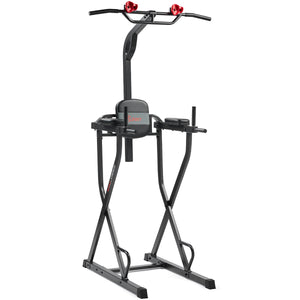Snacking always seems to be a controversial topic. Should you, or shouldn’t you? Is it better to avoid eating between meals or does it help curb your appetite? Research shows that, when done in a healthful way, snacking can be a great way to maintain a healthy diet. It can give you extra energy throughout the day, help you meet your daily nutrient requirements, and prevent overeating at your following meal.(1)
So, what’s the most healthful way to snack – especially when you’re busy at work and don’t have much free time? Taking a few intentional steps to set yourself up for snacking success can be the key to making a meaningful difference in your diet. Here’s a few tips to help you get started.
1. Plan Ahead
The best thing you can do to set yourself up for success is to plan out your snacks when you meal prep your food for the week. Decide which foods you want to snack on during your week and be sure to have it on hand. When hunger strikes you will be less tempted to reach for junk food.
2. Create a Healthy Macronutrient Balance
Prioritize well-rounded snacks that incorporate carbohydrates, protein, and healthy fats. A good mix of all three macronutrients will help satiate your cravings and keep you full for longer.
Complex Carbohydrates
Choose complex carbohydrates, as these food sources will break down slowly and provide you with more energy over a longer period of time. Some good examples of complex carbs are whole grain foods, vegetables, and fruits.
Protein
Protein is another great way to fill your appetite. Not only that, but it is essential for building muscle and supporting various other functions throughout your body.
Fats
Despite the common misconception that fats are bad for you, there is a robust body of research that demonstrates healthy fats are great for heart health, lowering blood cholesterol, controlling blood sugar, and reducing inflammation.(2) Find food sources that have high levels of unsaturated fat like avocado, nuts, or dark chocolate.
Put it All Together
A great way to put all three macronutrients together is to make a to-go charcuterie box. Get a nourishing dose of protein and fat with your choice of nuts and cheese, and your favorite fruit to round it out with some complex carbohydrates. Throw in a couple squares of dark chocolate for a healthy treat!
3. Read Nutrition Labels
Just because a snack is labeled “organic” or “all-natural” doesn’t always mean that it is healthy. Take the extra step to check the nutrition facts on any prepackaged food that you plan to snack on and ensure that its contents are nutritionally well-balanced. Here are a few key components to look out for:
- Serving Size: Check this first because it can change the subsequent nutrition facts. It may only display the information for one serving size, but your snack may contain several serving sizes. For example, a snack that is labeled as 100 calories for one serving size but contains 3 serving sizes in total, really means the entire snack contains 300 calories.
- Fats: Aim to avoid any snacks that contain trans fats or high levels of saturated fats. Instead, swap them out for snacks that contain primarily unsaturated fats.
- Sugar: If there is a high level of added sugar in a snack, it is best to avoid it. There is nothing wrong with a treat every now and then, but regularly consuming snacks that have a high sugar content will cause blood sugar spikes, then crashes, leaving you feeling drained and hungry.
4. Beware of Sugary Drinks
Beverages that have a high sugar content can sneakily add calories to your daily intake without filling you up or curbing your appetite. It’s fine to have these types of drinks every once in a while, but drinking them daily could be a cause of blood sugar spikes and crashes, as well as adding unnecessary, empty calories to your diet.
5. Stay Hydrated
Drink about half your body weight in ounces daily to stay adequately hydrated and keep those hunger pains at bay. Not only does water take up space in your stomach and therefore makes you feel less hungry, but hunger and thirst cues can oftentimes be conflated with one another. Staying hydrated will help prevent this mix up, so when you feel hungry you know that it’s truly your stomach talking.
Satisfy Your Cravings
Snacking is an excellent way to ensure that your body is getting enough nutrients to be nourished and feel good. It prevents overeating at mealtimes, but it also provides a sense of satisfaction and pleasure. Taking the steps to ensure that the snacks you reach for are healthy, will make your snacking experience all the better.


1. Mayo Foundation for Medical Education and Research. (2023, June 27). Mayo Clinic Q and a: Snacking for meals - Mayo Clinic News Network. Mayo Clinic. https://newsnetwork.mayoclinic.org/discussion/mayo-clinic-q-and-a-snacking-for-meals/#:~:text=When%20snacking%20is%20done%20correctly,and%20reach%20weight%2Dloss%20goals. Accessed 10 June 2024.
2. Doctors, A. the. (2022, June 15). Eating healthy fats has many benefits. UCLA Health. https://www.uclahealth.org/news/article/eating-healthy-fats-has-many-benefits#:~:text=A%20robust%20body%20of%20research,sugar%20control%20and%20reducing%20inflammation. Accessed 10 June 2024.
























Add Your Name & Email
Please enter your name and email to continue.We won’t display your email publicly.